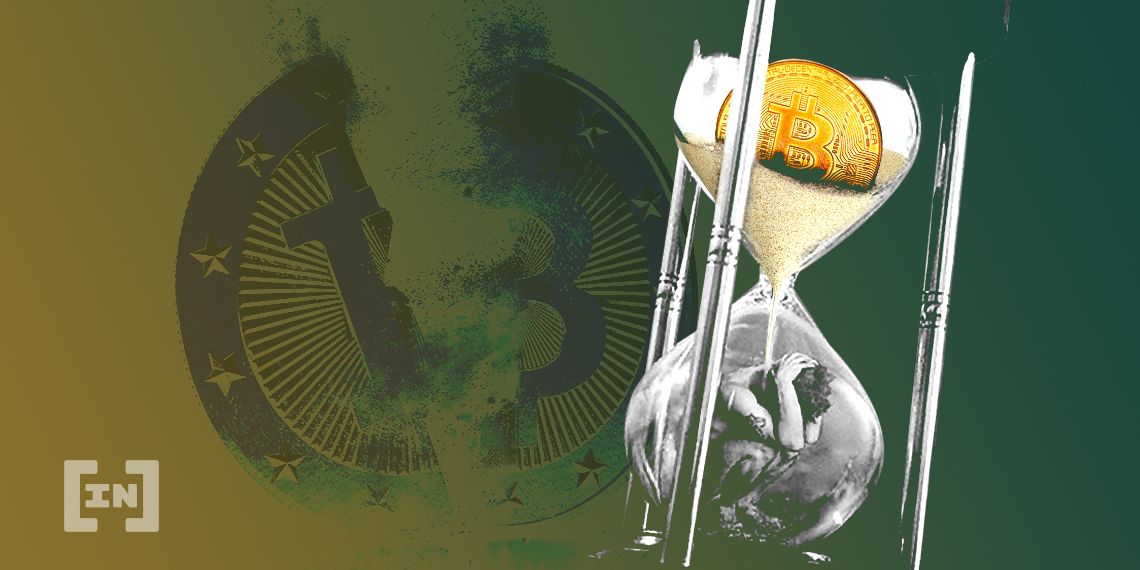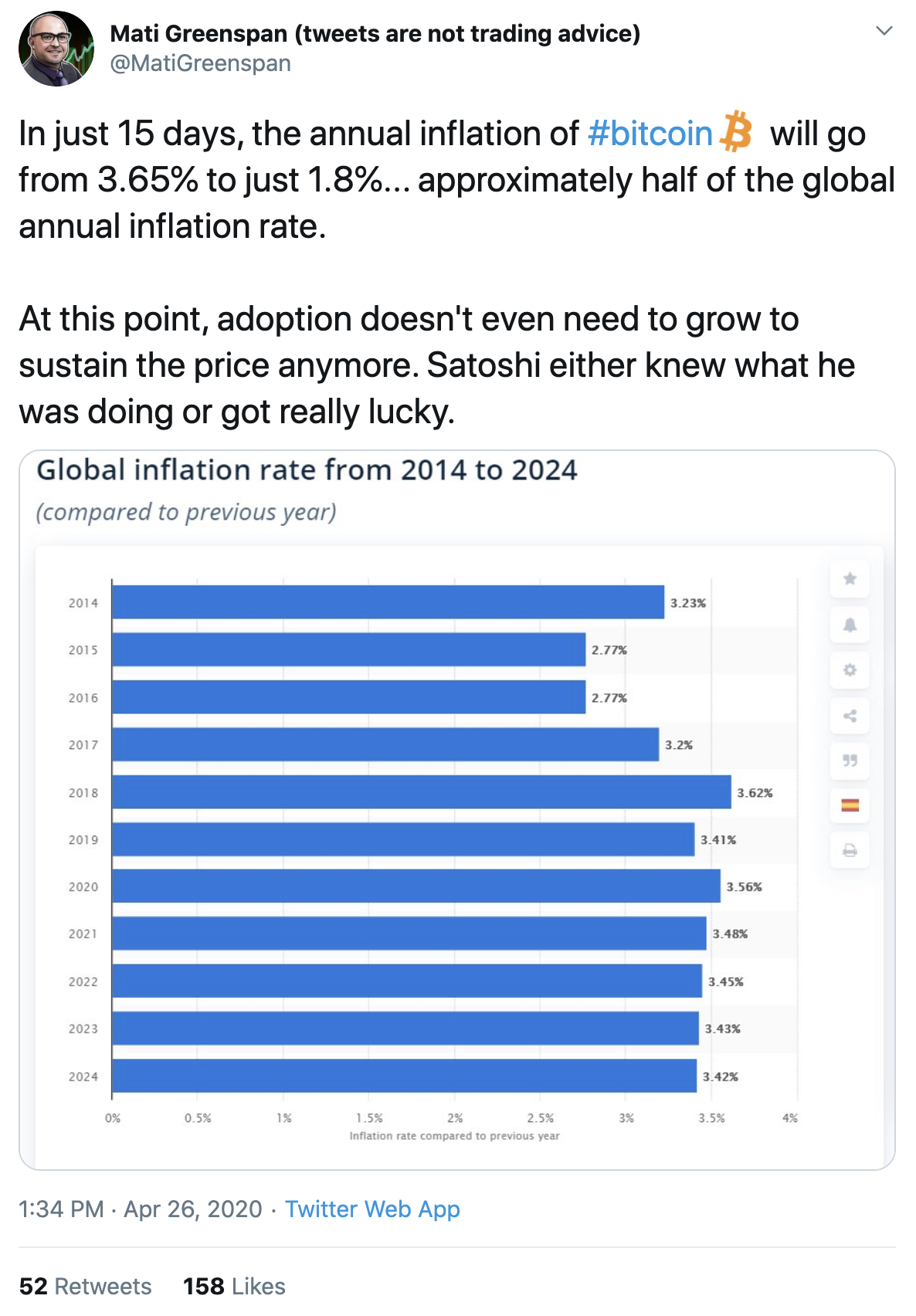After the halving event, Bitcoin will enjoy an inflation rate much smaller than the world average for fiat currencies.
Could Bitcoin’s drop in annual inflation create an increase in demand? After its halving event, the leading cryptocurrency will be much scarcer. Its annual inflation rate will consequently be much less than most central banks.
Bitcoin’s Inflation Rate to Drop to 1.8%
At the time of writing, Bitcoin’s inflation rate is 3.65%. However, it will soon drop to just 1.8% after the halving event. That’s about half the rate of inflation for the world average. By comparison, the world saw an inflation rate of 3.41% in 2019.
As analyst Mati Greenspan (@MatiGreenspan) writes, this will inherently make Bitcoin more attractive.
“At this point, adoption doesn’t even need to grow to sustain the price anymore,” he writes in a recent tweet.
Others, however, weren’t as convinced. A low inflation rate does not inherently make a commodity or asset attractive, some would argue. It also relies on supply and demand. In other words, Bitcoin will still have to mature as an asset if it wishes to be a ‘reserve currency’ or a mainstream store-of-value.
Mainstream investors are not currently looking for a hedge against inflation at the moment. It’s clear that we are now amid a deflationary crisis. The macroeconomic indicators may change, however. As Mati Greenspan, founder of Quantum Economics, told BeInCrypto, high inflation tends to follow a deflationary spiral.
“That’s how it usually works. The pendulum can swing pretty fast sometimes, especially under extreme conditions like we’re seeing now.”
Is the Halving Event Priced In?
The fact that Bitcoin is becoming scarcer is definitely bullish for the long-term. However, the short-term forecast is much more unclear.
There has been some speculation that the halving is priced in entirely. As BeInCrypto reported recently, Bitcoin’s price movements as of late are dissimilar to what transpired during the last two halving events. Bitcoin’s RSI has never been this low before a halving event. It’s currently unclear what this entails for Bitcoin’s short-term price movements.
The current macroeconomic outlook also makes predicting the short-term forecast for Bitcoin especially difficult. However, Bitcoin’s low inflation rate will likely be more attractive when the dust settles.



